Conscious Materials
Sometimes it can feel like we live in a time of perpetual turmoil. The never-ending news feed shows a steady stream of negativity and indeed we consume media in myriad and omnipresent forms ways, which can often feel like there’s no escape, and even very little hope to cling. Having experienced a British summer of unprecedented unpredictability in the weather (along with the news) it’s viscerally clear that climate change is in full affect and here in the UK we are still facing material and housing shortages and with it, price hikes. But history shows that times of uncertainty and strife have often served as a catalyst for reassessment and collective change, and the design world is often at the fore. Where better to look than the bright young minds coming out of one of London’s leading design universities, The Royal College of Art?
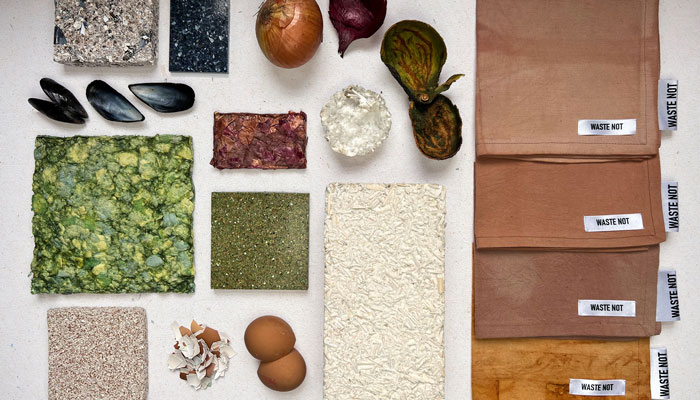
Ella Adiki Nartey, MA Interior Design, Titled- Waste Not Materials. A selection of my material explorations using food waste and food by-products
By now we’re well aware that waste plays a significant role in the effects of climate change, not least in the manufacturing of our materials. The same can also be said for food, which is something that Ella Adiki Nartey’s project WASTE NOT looks to tackle head-on. Taking egg and mussel shells, along with egg boxes, organic food waste and biopolymers she has created an entirely new material palette. The reasons behind the project are clear, as Ella explains:
“According to the Waste and Resources Action Programme (WRAP), the UK wastes approximately 9.5 million tonnes of food each year. Estimates suggest households are responsible for 70% of all food waste with the hospitality sector adding an additional 3 millions tonnes of food waste per annum. Each tonne of food waste that ends up in landfill is then responsible for producing approximately 4.2 tonnes of greenhouse gases. As a result, the UK’s first food waste reduction roadmap aims to reduce food waste by 50% by 2030.”
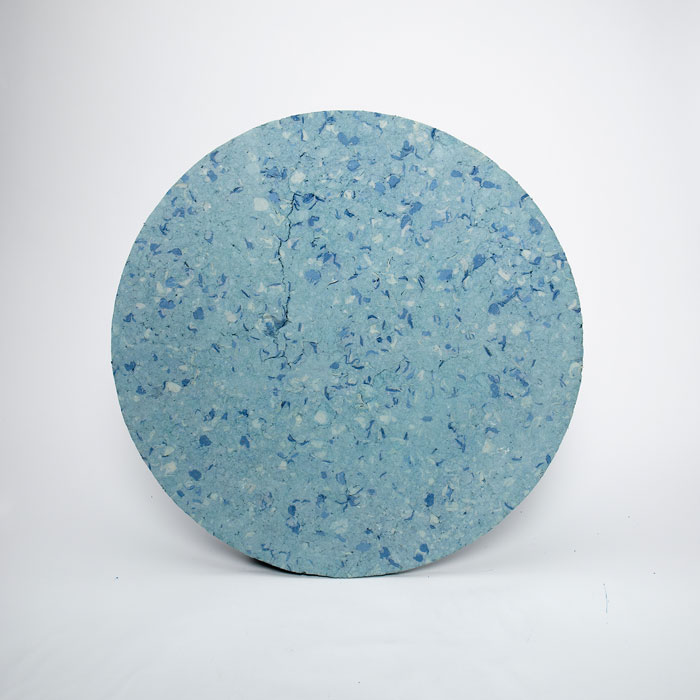
Ella Adiki Nartey, MA Interior Design, Titled – Recycled Egg Box Table Top. A tabletop made my 100_ recycled egg boxes and a biopolymer binder, size – 520mm x 520mm
Following in the footsteps of Silo London, Ella’s project ambitiously explores the idea of designing a space where the loop of food waste can be closed in the form of a zero-waste restaurant. In a rather novel approach, she proposes 3 kitchen alternatives for the restaurant, which are led by the type of food produced within: The Vegetarian, The Vegan and The Pescatarian. Situated within the former Siemens Brother’s Factory in Woolwich, the restaurant design salvages and repurposes the existing architecture, industrial language and colour palette, whilst utilising the food waste produced to create the biomaterials applied within. So whether you’re dining in the vegetarian area whilst sitting at a marbled table made from blue egg boxes and shell or leaning against a counter made from reconstituted mussel shell at the pescatarian bar, you can be sure that the waste loop of the space is as closed a possible.
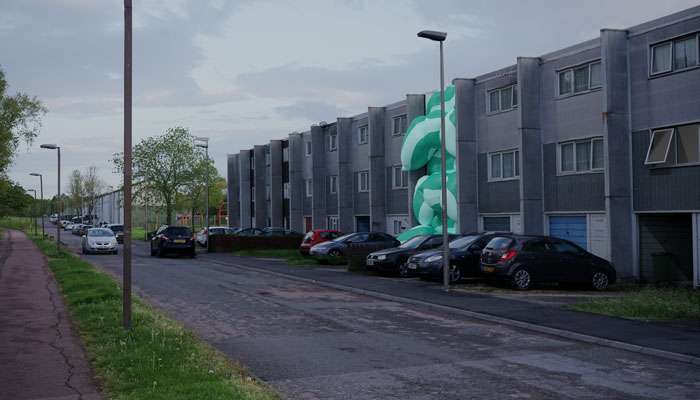
Netherfield Terrace
Another area of concern, not least for younger generations, is finding a suitable home in which to live. The UK housing crisis is a topic that designer Sean Mansfield knows all too well being a part of what is increasingly referred to as “Generation Rent”. Once again, the designers own words summarise the thinking behind the project most aptly:
“There is no housing crisis without capitalism. There is no capitalism without the enclosure of land and, in the UK, we have a particular type of capitalism rooted in these enclosures. Society is still to some extent feudal: landlords collect rent, through leases or rents, from tenants on land technically only outright owned by the monarch. Climbing this medieval system is difficult and, unless fortunate enough to have financial help from parents, my generation is unlikely to set foot on that ladder.”
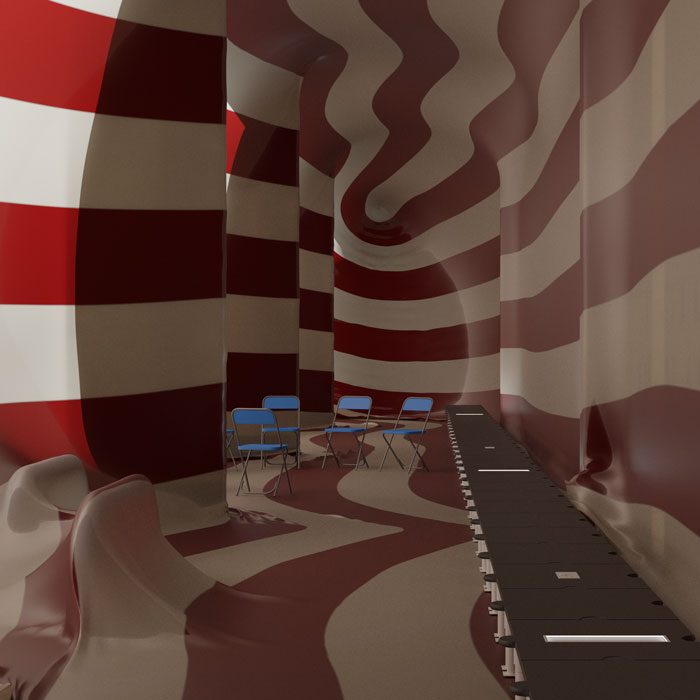
Netherfield Tavern
What comes from this thinking are temporary structures that can be deployed at speed, taking up residence in spaces that might be forgotten or overlooked. The striped inflatable fabrics are introduced to buildings, growing and spreading to encapsulate the details within, creating abstract environments that blur the lines between what is real and fake as well as what we deem private and public.
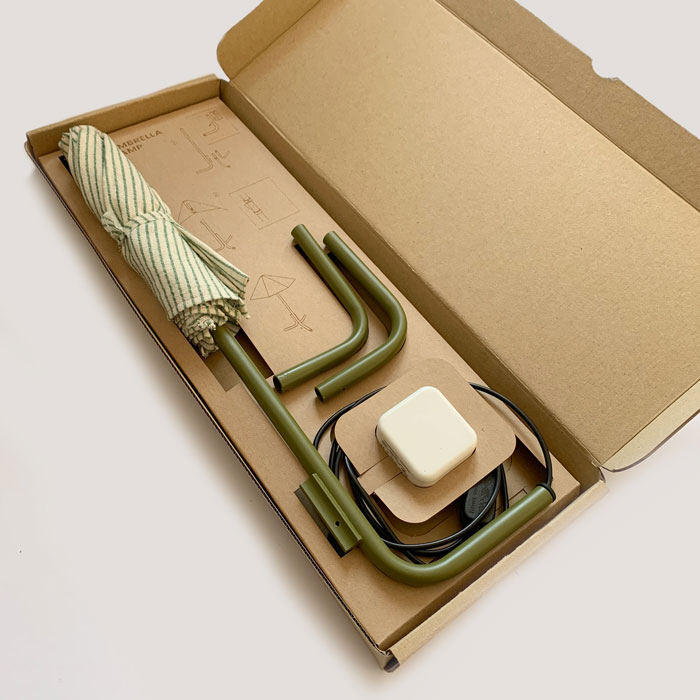
Constance Riley lamp in box
While perhaps less of a political issue, Constance Riley explores another societal concern; that of postal convenience. Given our reliance upon online purchasing, not least since the pandemic, we’re evermore reliant upon the postal service for receiving goods. Recognising that the flipside of this has also led to a collective sense of inconvenience and disappointment for consumers, Riley embarked on a design mission to create products that serve their function, look the part and get delivered on time. This all encapsulating approach comes in the form of NoBell, a range of products that have been designed with their packaging in mind so that they are easily delivered through a standard UK post box, thus reducing the chance of a “Sorry we missed you slip” on the hallway mat.

Constance Riley lamp
Lighting is a prime example of a product that ordinarily requires large boxes, impact resistant padding and with it a face-to-face delivery, but the Umbrella Lamp cleverly bypasses all of these. Made from painted metal tubing and fabric the self assembly pop-up desk lamp is inspired by it’s namesake and fits inside a standard sized, Royal Mail approved box. Other variations include versions inspired by fans and springs, which offer a range of design styles while all offering the guarantee of stress-free delivery.

Masao Zhengxiong Rong, MA Design Products THE TREE
Chinese designer-artist Masao timber furniture series explores the notion of decolonising the way in which we interact with nature, moving away from efficiency-led manufacturing to a more crafted outcome. As he explains:
“I am interested in the connection between crafting techniques and the geographical/cultural environment that give birth to them. Such connections breed cultures and beliefs that could sustain coexistence of indigenous people and nature. However, with the traditional crafts replaced by modern ways of production, such connections are gradually lost, breaking the balance of the past people-nature relationship, forming the new relationship where human rules over nature.”
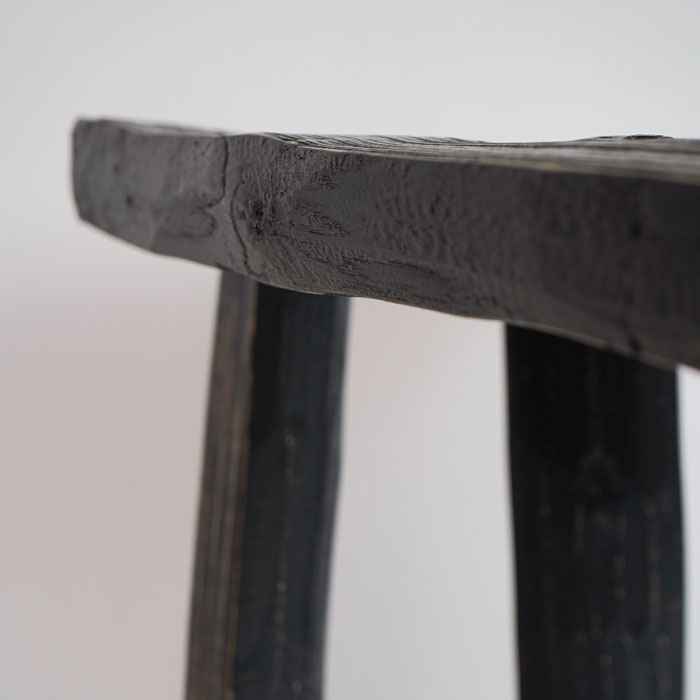
Masao Zhengxiong Rong, MA Design Products THE TREE
In the creation of the seating range he reignites the idea of locality, sourcing sweet chestnut and walnut from trees coppiced in his neighbourhood as well as the crafts people who can transform them. Utilising a single trunk the wood goes through a series of traditional hand processes, and whilst more labour intensive, each piece has a charmful authenticity that connects it to it’s geographical origins and human maker. The fact that these materials were already being cut in order to conserve the plants also serves a healthy reminder of the ease at which we can produce materials and products sustainably when we readjust our collective focus.
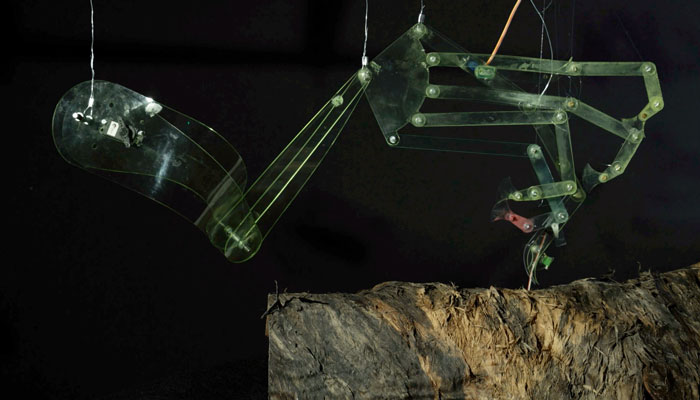
Carolina Estrada Textile, Writings of Lost Bodies
A shift of focus and a collaborative approach to materiality is also shared by Peruvian artist-designer Carolina Estrada, although she hasn’t sought out crafts people, instead uniting with a robotic arm. The link between traditional, even ancestorial, and contemporary practices feature heavily in all of her work, although Haptic Imagination also has a political undercurrent that creates a depth beyond the gimmick of AI-assisted creation.
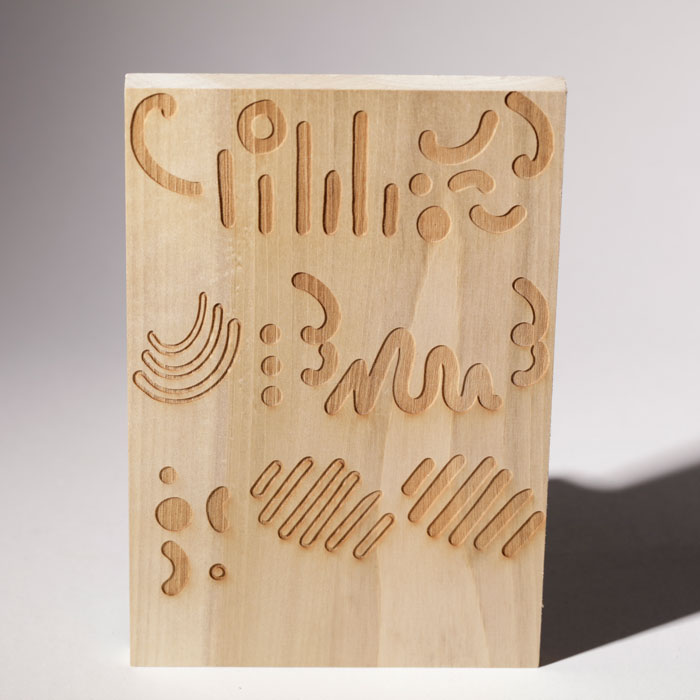
Estrada Textile Haptic Imagination II
The robotic arm is set to mimic human touch and in a live performance autonomously reads a series of laser etched markings through it’s innate finger tips. The forms within the marking, which appear to be some form of abstract language are inspired by traditional tattooing and serve as a connection to indigenous practices, the knowledge from which many increasingly feel could serve as a powerful tool in the reversing the climate and biodiversity crisis.




